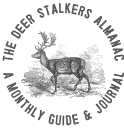Simon Gray, a Capreolus Club member and global pig farmer, argues that boosting venison consumption is essential for sustainable deer management. Drawing lessons from the meat industry, he explores how we can overcome the barriers to venison's success.
The discussion around controlling deer populations has intensified, with a clear consensus that increasing consumer demand for venison is a critical part of the solution. As a recreational deer stalker with 40 years of global experience in the pig farming industry, I see strong parallels between the two sectors. In pig production, expanding a business depends on driving pork consumption. Similarly, increasing venison consumption requires making it a desirable choice for consumers. But what makes a meat desirable?

According to a 2021 Statista (OECD) survey, 82% of food purchase decisions are driven by taste, followed by price (66%), healthfulness (58%), convenience (52%), and environmental sustainability (31%). Interestingly, taste also tops the list of reasons why people reject certain foods. The Collins dictionary defines taste as “the sense by which the qualities and flavour of a substance are distinguished by the taste buds,” and it is further influenced by smell, texture, and appearance.
As humans, our taste preferences vary widely—there is no one-size-fits-all. Therefore, to sell more venison we need to focus on taste. We already know that venison is a very healthy meat. We also know that venison hits the mark for being natural and environmentally sustainable.
Lessons from Meat Consumption Trends
Over the past 20 to 30 years, poultry, especially chicken, has seen a consistent rise in consumption. Beyond cost, chicken's success lies in its ease of purchase and use. It is a highly consistent product with limited cuts (breast, leg, wing) and a consistent taste, making it easy for both consumers and chefs to incorporate.
Venison, on the other hand, faces significant challenges, with taste consistency being the foremost issue; but there are others.
Is wild venison really sustainable from a business perspective?
Sustainability hinges on profitability, and wild venison production struggles in this regard. The current model relies heavily on recreational stalkers like me, who subsidies the process by paying to shoot. If the true costs of producing wild venison—factoring in labour, equipment, and processing—were calculated, even at minimum wage it’s likely that current pricing would prove unsustainable and unprofitable.
For wild venison to become a profitable and sustainable industry, we must either increase the selling price or introduce subsidies. Transparency about production costs would be a good starting point to determine what government or private support might be necessary.
Venison’s Cooking Challenges

Venison is undeniably a healthy meat—lean, wild, and free from antibiotics. However, its leanness presents cooking challenges. Lean meats like venison (and modern ultra-lean pork) are prone to becoming dry and tough when overcooked, which can deter home cooks. To address this, education is essential.
We need to promote venison on cooking shows and through celebrity chefs, who can showcase its potential in easy, tasty recipes. My son, a chef in York, serves a dish called "Kentucky Fried Partridge," a creative way to make game appealing. Similar initiatives could work wonders for venison.
Taste and Consistency
To grow venison consumption, we must deliver consistent, high-quality taste. This is complicated by the diversity of deer species in Britain (six in total), variations in age, sex, habitat, and seasonal availability.
Commercial meat production minimises these variations through controlled breeding and harvesting. For instance, in pig production, animals are typically young, with males often castrated to avoid the strong flavours associated with hormones. Old or breeding animals are rarely sold as fresh meat, instead being used in processed products such as dog food.
Wild venison production lacks these controls, making consistency a challenge. Stress levels during culling and postmortem processes, such as bleeding, gralloching, skinning and chilling, also impact taste and texture. Commercial slaughterhouses manage these factors efficiently, but achieving similar standards in the field is difficult.
How to increase Venison Consumption
From my perspective as an experienced animal protein producer, here are some suggestions:
- Focus on Prime Meat for Consumption
An effective strategy for balancing deer population control with the production of premium venison involves focusing on prime meat for fresh consumption. Culling young deer, particularly females that have not yet reproduced, ensures tender, high-quality meat while simultaneously aiding in population management. Younger animals provide prime venison ideal for fresh consumption and market demand. Meanwhile, older deer, whose meat may lack the desired quality for premium cuts, can be diverted to more processed products, or removed from the human food chain altogether and into the dog food market to uphold the high-quality standards needed in the venison industry.
- Label by Species and Age
Clear labelling of venison by species and age is another step that could positively influence consumption rates. For example, by doing this, consumers would benefit from knowing whether the meat they are purchasing comes from, say, a 6-month-old Muntjac doe or a 5-year-old Fallow buck. This level of transparency would ensure a more consistent and predictable taste giving the consumers the ability to choose dependent on what they prefer.
- Optimise Postmortem processes
Understanding correct field practices and investing in equipment that uphold the highest hygiene standards can significantly improve meat quality. These practices, such as proper carcass handling and immediate cooling, help preserve the freshness and flavour of the venison keeping it as consistent as possible for the consumer.
- Industry-Led Marketing
Finally, the venison industry must take the lead in marketing efforts. By emphasising venison’s unique qualities—such as its rich taste, health benefits, and sustainability—industry-driven campaigns can connect with modern consumers. Messaging that resonates with current trends in health-conscious and environmentally friendly eating habits will better position venison as a desirable and premium meat choice and encourage growth in the market without relying on government intervention. In my experience, government intervention in meat production makes things more complicated, administrative and expensive. Therefore, the industry has to sort itself out and we have to market ourselves.

To make venison a more common feature on dining tables, we must confront its challenges directly. Boosting sales—and potentially increasing its price—can provide the resources necessary for sustainable deer management. For this to happen, the industry must adopt a forward-thinking approach, embracing innovation, education, and strategic marketing to establish venison as a staple of the British diet.
If you would like to be taught how to cook venison please sign-up to the Venison Cooking Masterclass here: Michelin Star Venison Cooking Masterclass
And for Venison Butchery & Skinning please follow the link here: Best Deer Butchery Online Course
Finally, If you'd like to take up deer stalking a great place to start is by taking the LANTRA Proficient Deer Stalker Certificate Level 1. You can find out more about the course here: deer-stalking-course



















